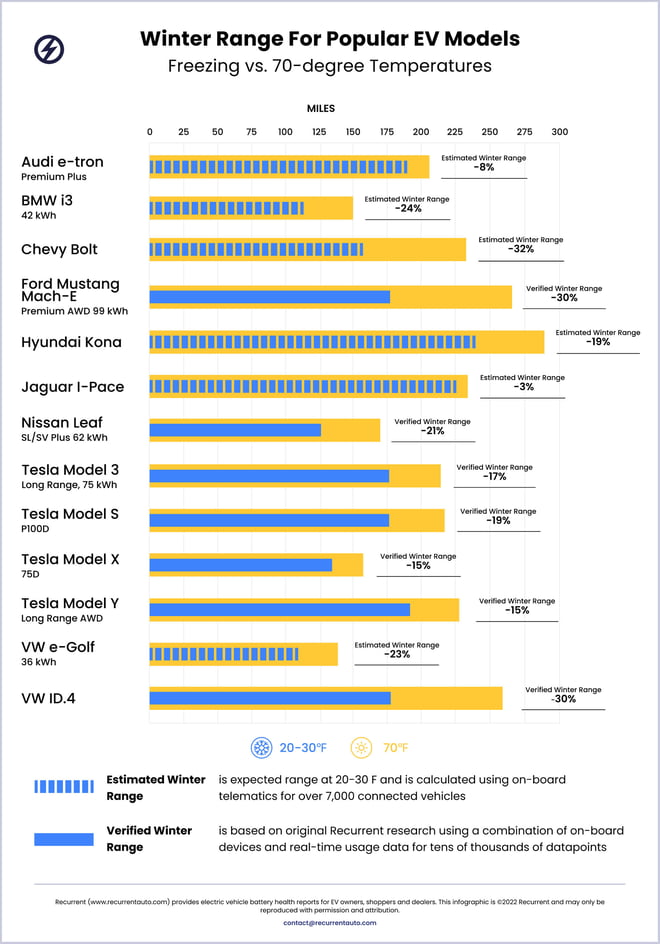Here’s What We Know About the Chevy Bolt Recall
General Motors recently issued a recall and stop-sale for all Chevrolet Bolt EVs and Bolt EUVs. In addition to...

With winter in full swing, let’s talk about the change in range for electric car drivers. It’s no secret that cold temperatures reduce the range of a vehicle, whether electric or gas-powered. Recently, we hosted two webinars on the topic – one focused on winter driving in general and one focused on winter road trips. What better way to spend time indoors in the freezing cold today than catch up on the recordings?
Our winter driving webinar was a hybrid presentation and panelist webinar. In the first part of the webinar, we discuss how much range loss folks can expect, ways to mitigate range loss, the impacts of snow and ice, and more. In the latter half of the webinar, there's a great discussion with EV Ambassadors and participants.
Driving Through A Winter Wonderland
The webinar recording is included above, but in the meantime, here are some of the key learnings:

For our second webinar, we invited EV Ambassadors to act as panelists and have an informal discussion about holiday road trips and answer questions from attendees.
This particular EV chat features many questions about camping in cold temperatures and potentially camping overnight in one’s EV. (Hint: it’s possible, but you want to make sure your car is plugged in to keep the heat on.) Other topics included mitigating range loss, favorite charging apps (PlugShare and A Better Route Planner), planning trips, charging at New England ski/snowboarding slopes, winter tires and more!)
A couple things to note on winter tires in particular:
Colder temperatures will mean a decrease in range, there’s no doubt about that. But that hasn’t stopped our EV Ambassadors from recommending electric cars to everyone they know! If you’re looking to start your electric car journey, check out our shopping tool or join our Drive Green Community Group to continue the conversation.
General Motors recently issued a recall and stop-sale for all Chevrolet Bolt EVs and Bolt EUVs. In addition to...
I often hear EV skeptics say some variation of, “Unless electric vehicles are charged with 100% renewables,...
Comments